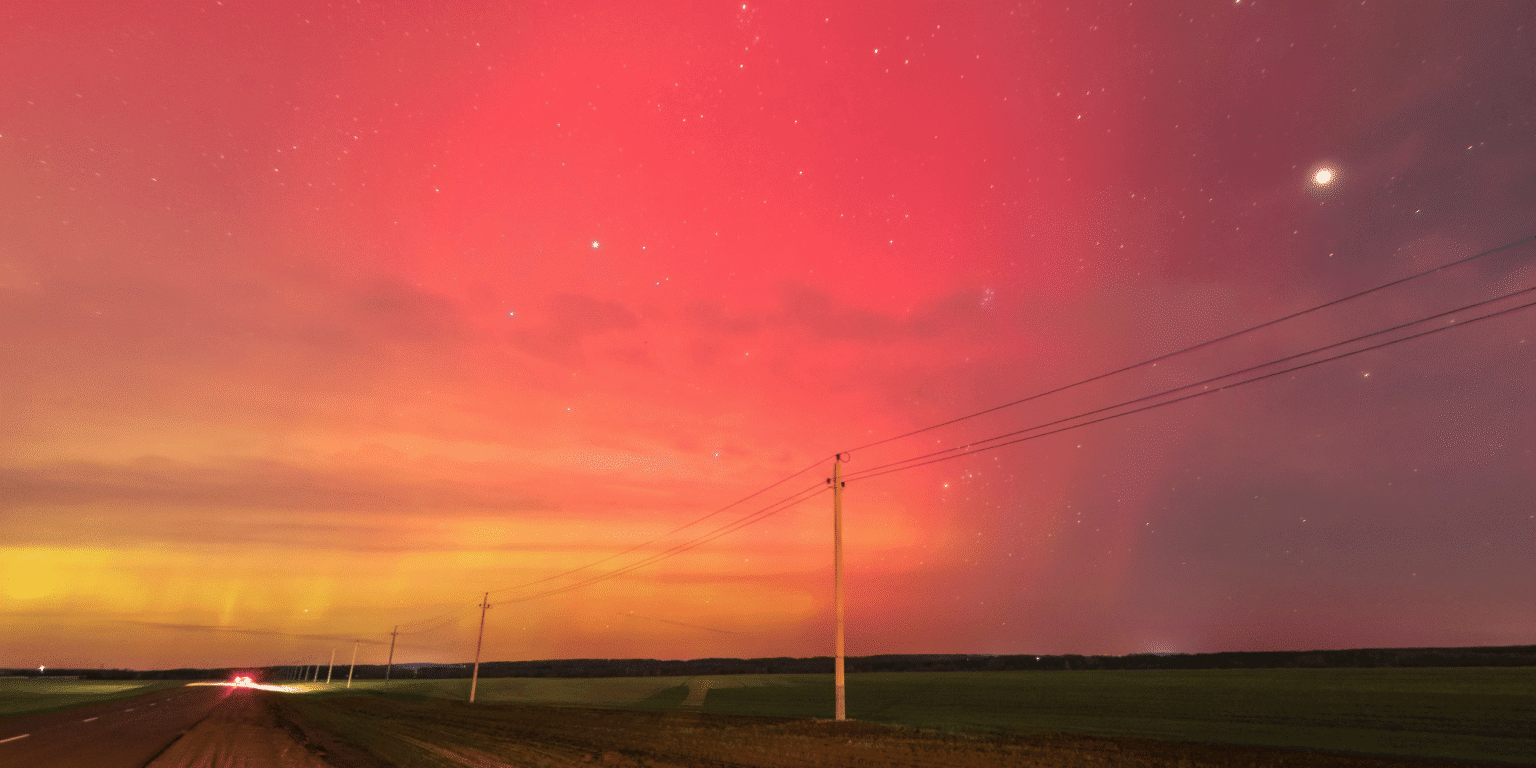Chloe Ramirez, Senior Correspondent
A rare and powerful geomagnetic storm illuminated the skies over 13 U.S. states on June 2, 2025, as the northern lights became visible far beyond their usual range, offering a spectacular display for skywatchers.
Unprecedented Aurora Visibility Across the U.S.
A severe G4-class geomagnetic storm, triggered by a coronal mass ejection (CME) from the sun, reached Earth on June 1, 2025, leading to extraordinary auroral displays across much of the United States. The event was anticipated by scientific agencies, which advised residents to look northward during the night for the best viewing experience.
The aurora borealis, typically confined to higher latitudes, was visible as far south as Alabama and Northern California, marking one of the most widespread sightings in recent history. States including Wisconsin, Minnesota, Michigan, and even parts of New Mexico and Kansas reported sightings of the vibrant lights.
Understanding the Geomagnetic Storm
The geomagnetic storm was the result of a CME emitted by the highly active sunspot region AR4100 on May 31, 2025. Traveling at nearly 1,938 kilometers per second, the CME reached Earth on June 1, causing significant disturbances in Earth’s magnetosphere.
Weather prediction centers issued a G4 (Severe) Geomagnetic Storm watch, indicating potential impacts on satellite operations, communication systems, and power grids. Fortunately, no major disruptions were reported, allowing the public to focus on the breathtaking spectacle overhead.
Tips for Viewing the Northern Lights
For those interested in witnessing such celestial events, experts recommend the following:
- Location: Find areas with minimal light pollution, such as rural or elevated locations.
- Timing: The best viewing times are typically between 10 p.m. and 2 a.m. local time.
- Weather Conditions: Clear skies are essential. Check local forecasts to ensure optimal viewing conditions.
- Photography: Use a camera with manual settings to capture the auroras. A tripod can help stabilize the shot for longer exposures.
Even if the aurora is not visible to the naked eye, smartphone cameras might capture its subtle glow.
The Science Behind Auroras
Auroras occur when charged particles from the sun interact with Earth’s magnetic field and atmosphere. These interactions excite atmospheric gases, causing them to emit light in various colors, predominantly green, pink, and red.
The intensity and reach of auroral displays are influenced by the strength of geomagnetic storms, which are classified on a scale from G1 (Minor) to G5 (Extreme). The recent G4-class storm is among the more severe classifications, capable of pushing auroral visibility to much lower latitudes than usual.
A Year of Solar Activity
The sun is currently at the peak of its 11-year solar cycle, known as the solar maximum. This period is characterized by increased solar activity, including sunspots and solar flares. Such heightened activity leads to more frequent and intense geomagnetic storms, offering more opportunities to witness auroral displays in atypical regions.
Astronomers and enthusiasts alike are closely monitoring these developments. With the solar maximum expected to continue for several more months, the chances of experiencing similar auroral events remain high.
Looking Ahead
As solar activity continues to surge, scientists anticipate more geomagnetic storms in the coming months. While these events provide stunning visual spectacles, they also serve as reminders of the sun’s influence on Earth’s space weather environment.
Monitoring these solar activities is crucial not just for the beauty they provide but also for the protection of critical technological infrastructure that can be affected by such events.
For those captivated by the recent display, more opportunities may arise soon to witness the wonder of the northern lights. Keeping an eye on forecasts and staying informed will help ensure you don’t miss the next celestial light show.
